solution Use Case
Scheduled Auto Channel Lineup Build and Upload to Telestream IQ PLM
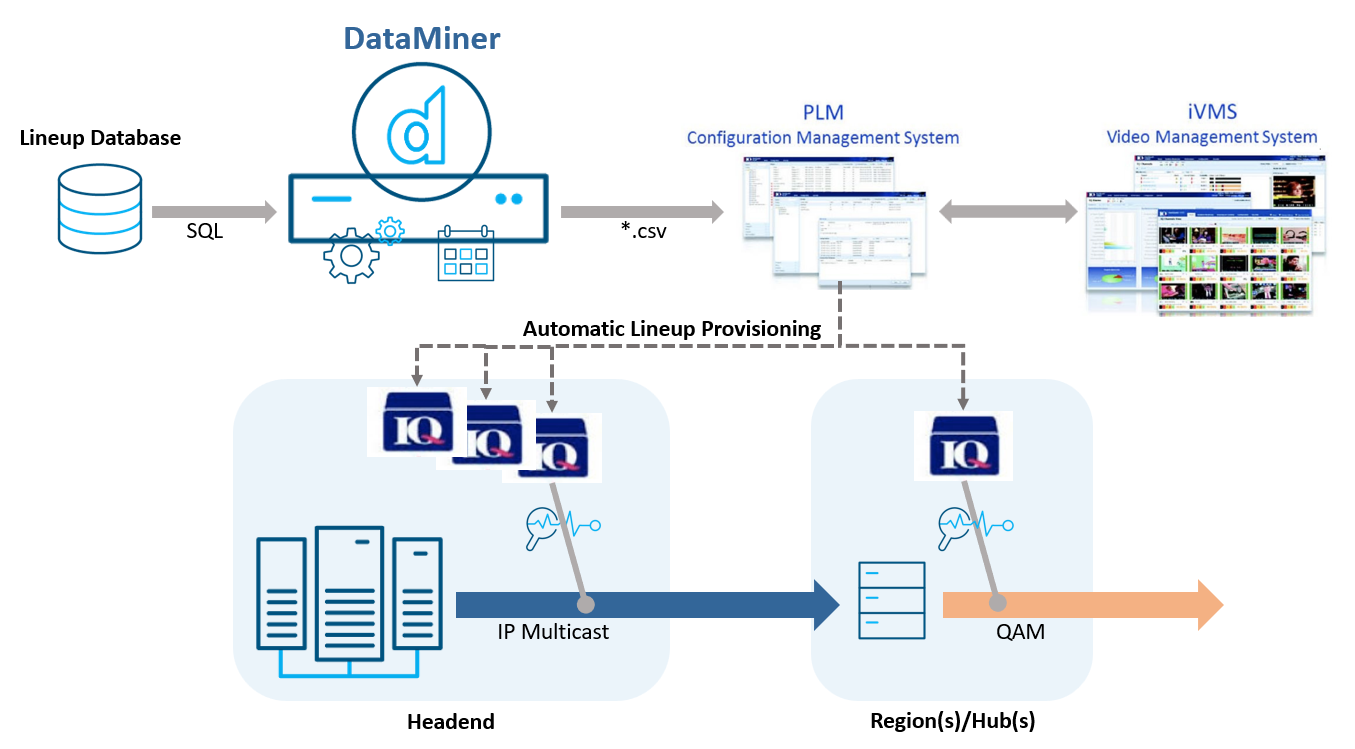
Especially for large service providers such as cable and OTT operators, administrating service lineup data efficiently and aligned with actual device configurations is a key activity. For this purpose, each time a lineup changes, dedicated personnel need to be able to feed relevant config data to monitoring probes (Telestream IneoQuest probes in this use case) in the central headend and in regional hubs.
The key components for this solution use case are an asset database containing relevant configuration data, managed by DataMiner Inventory & Asset Management (IAM), a DataMiner Automation script collecting all data from the database for export into a CSV file, which is eventually uploaded to Telestream IneoQuest PLM (Program Lineup Manager), and finally a DataMiner Scheduler maintained timetable.
Assets that make up DVB transport streams (determined by e.g. transportstream_id and multicast_ip) and associated DVB services (determined by e.g. service_id and service_type) are contained and specified in the asset database. All relevant data of such a transport stream and its services, flowing over IP and therefore also called “Flow” in IneoQuest terminology, is extracted by the Automation script (started either by a user clicking a dedicated button or by a nightly scheduled trigger) and inserted into a CSV file of a suitable structure to serve the IneoQuest PLM plugin interface. The Automation script finally uploads the CSV file to a specific directory on the PLM host. After accepting the CSV, PLM takes care of applying the modified flow data on the dedicated monitoring probes. As a result, the changed lineup is fluently applied to the monitoring system.
In the scope of DVB-C, the use case also suits QAM monitoring probes. In this case, the script produces CSV files that include the QAM-relevant parameters such as frequency.
The approach of this use case allows operational staff to have up-to-date monitoring in place immediately after each lineup change or other reconfiguration in the system, by means of a simple button click or, if the button click is forgotten for some reason, through a nightly scheduled trigger. No false positives or confusion after lineup changes will disturb the monitoring sessions, which is a crucial benefit in the fast-changing world of digital TV, radio, and streaming lineups.
USE CASE DETAILS
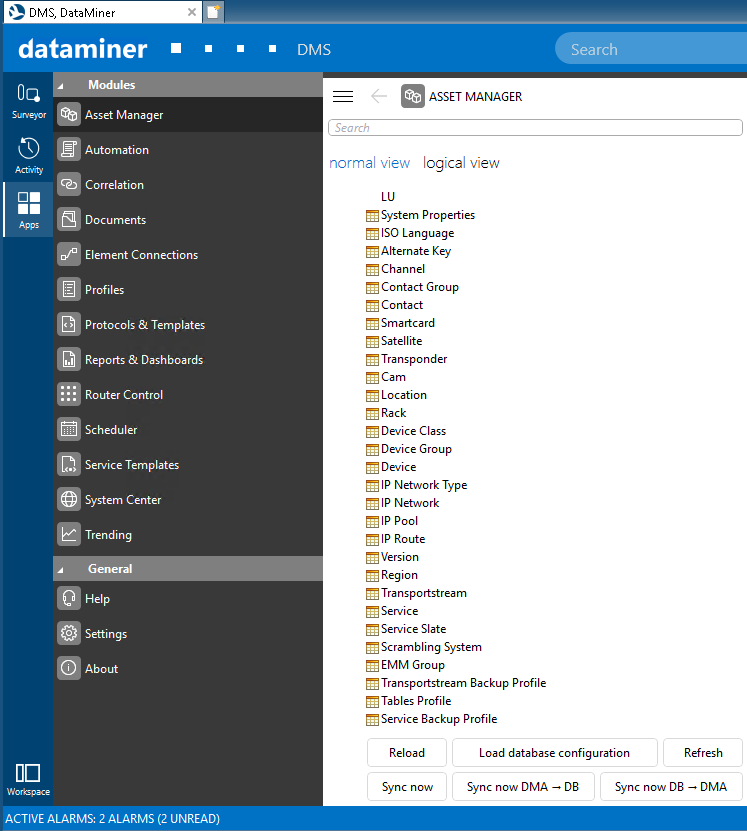 The asset database contains parameters of all lineup-related entities, such as transport streams, services, channels, IP network, devices, scrambling systems, etc. The management of these assets is basically part of a different use case. In that different use case, lineup planning changes the parameters and structures of a lineup (for example if "a service moves from transport stream A to transport stream B" or "the service type changes from HDTV h.264 [0x19] to HEVC h.265 [0x1F] because of a requested data rate saving codec change in the encoding stage".
The asset database contains parameters of all lineup-related entities, such as transport streams, services, channels, IP network, devices, scrambling systems, etc. The management of these assets is basically part of a different use case. In that different use case, lineup planning changes the parameters and structures of a lineup (for example if "a service moves from transport stream A to transport stream B" or "the service type changes from HDTV h.264 [0x19] to HEVC h.265 [0x1F] because of a requested data rate saving codec change in the encoding stage".
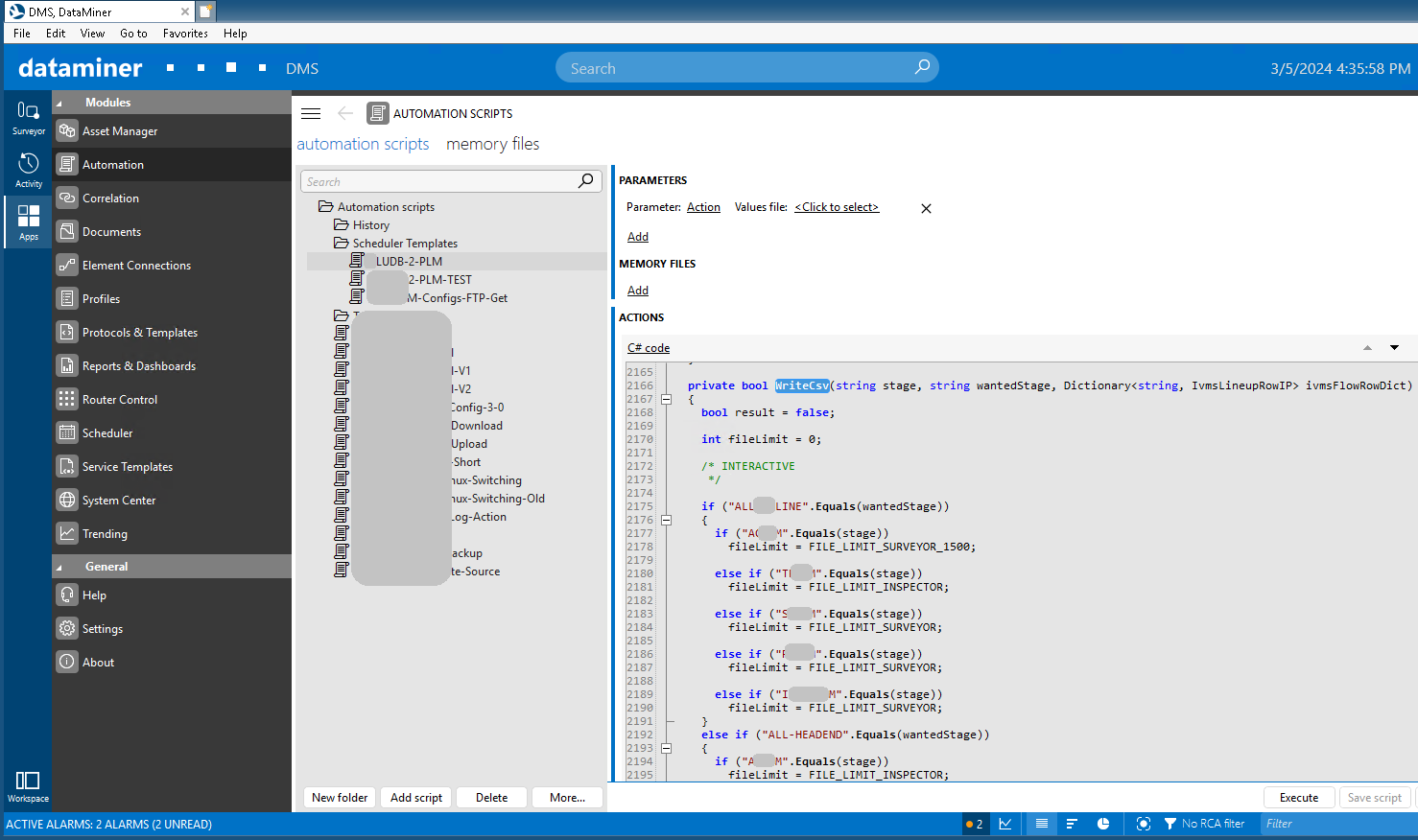 The Automation script is located in the Scheduler Templates folder because it should also be triggered by scheduler tasks. The script performs the following steps:
The Automation script is located in the Scheduler Templates folder because it should also be triggered by scheduler tasks. The script performs the following steps: 1. Extract all relevant configuration data from the asset database.
2. Create and write the probe configuration data CSV file to the local file system.
3. Upload the CSV file to the IneoQuest PLM host.
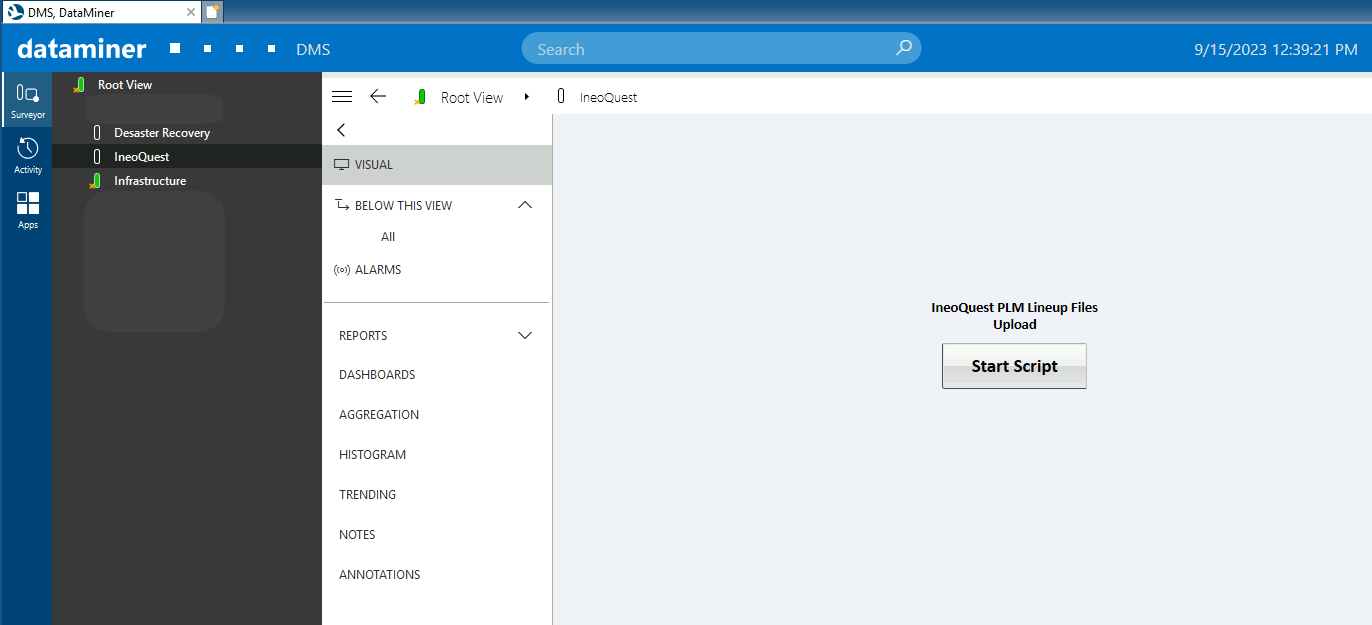 The Automation script can be triggered with this dedicated button.
The Automation script can be triggered with this dedicated button.
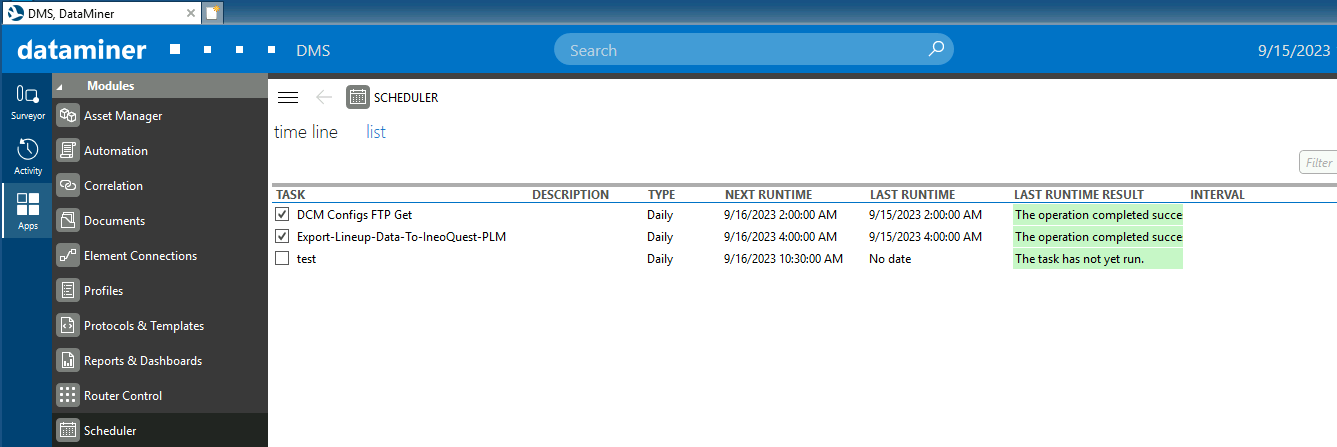 The Automation script can be triggered by this scheduled task.
The Automation script can be triggered by this scheduled task.
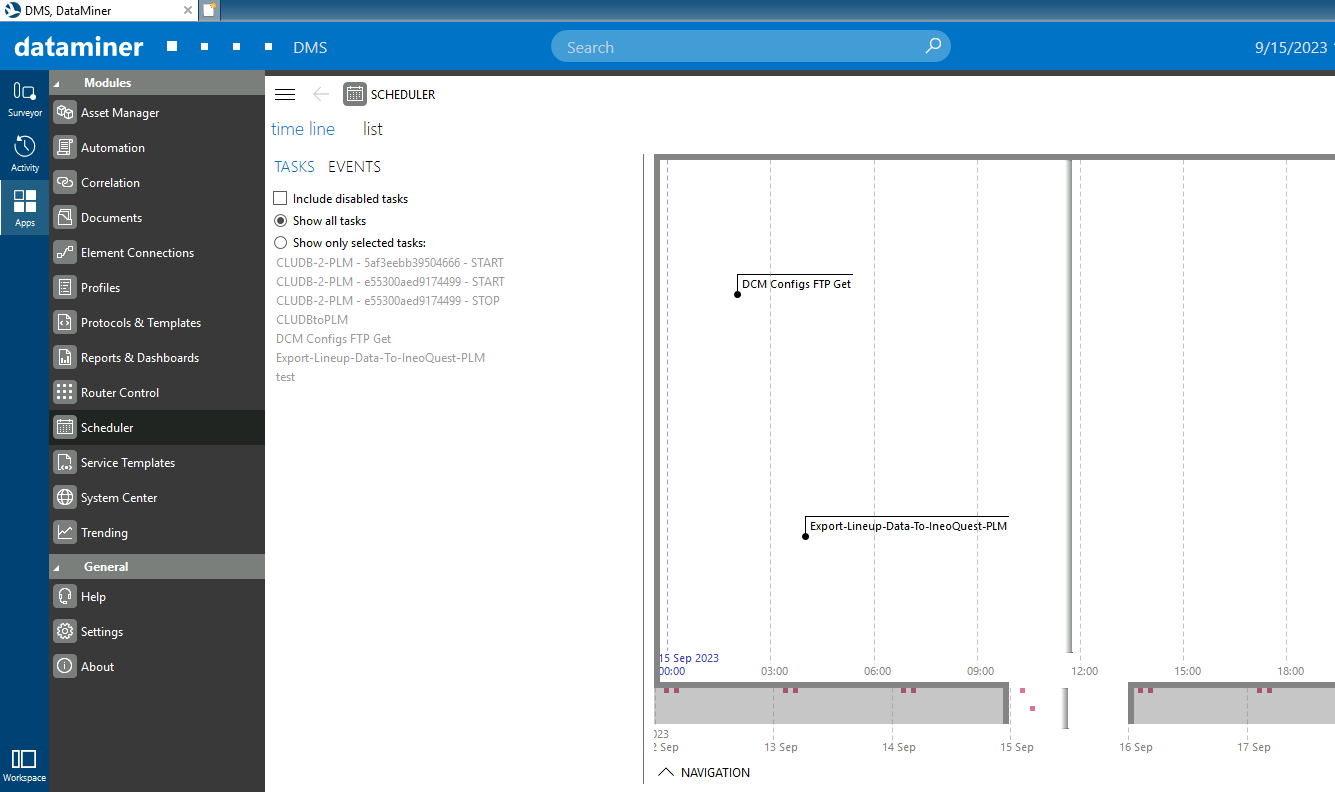 The task is scheduled for nightly execution (4:00 AM).
The task is scheduled for nightly execution (4:00 AM).